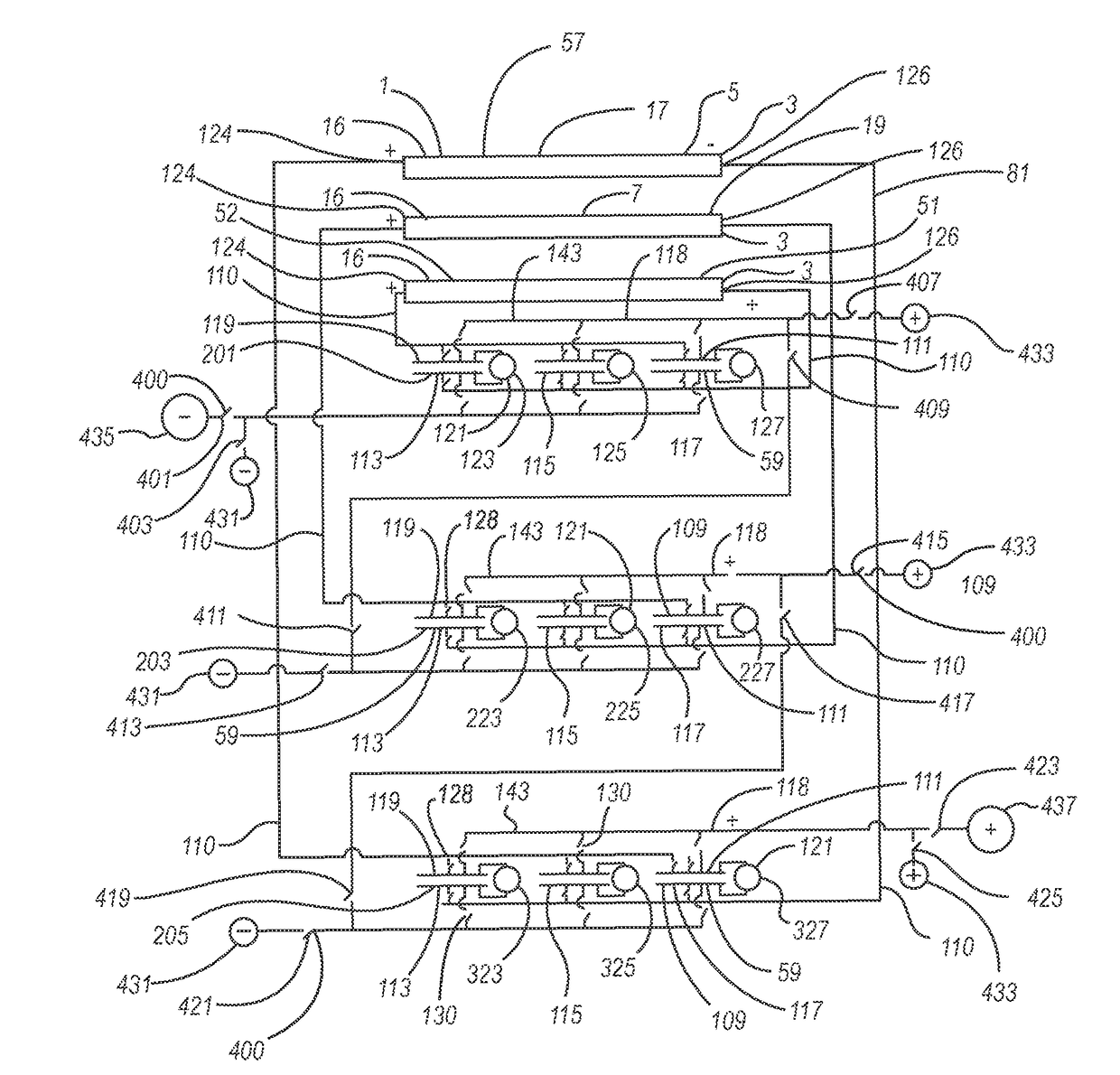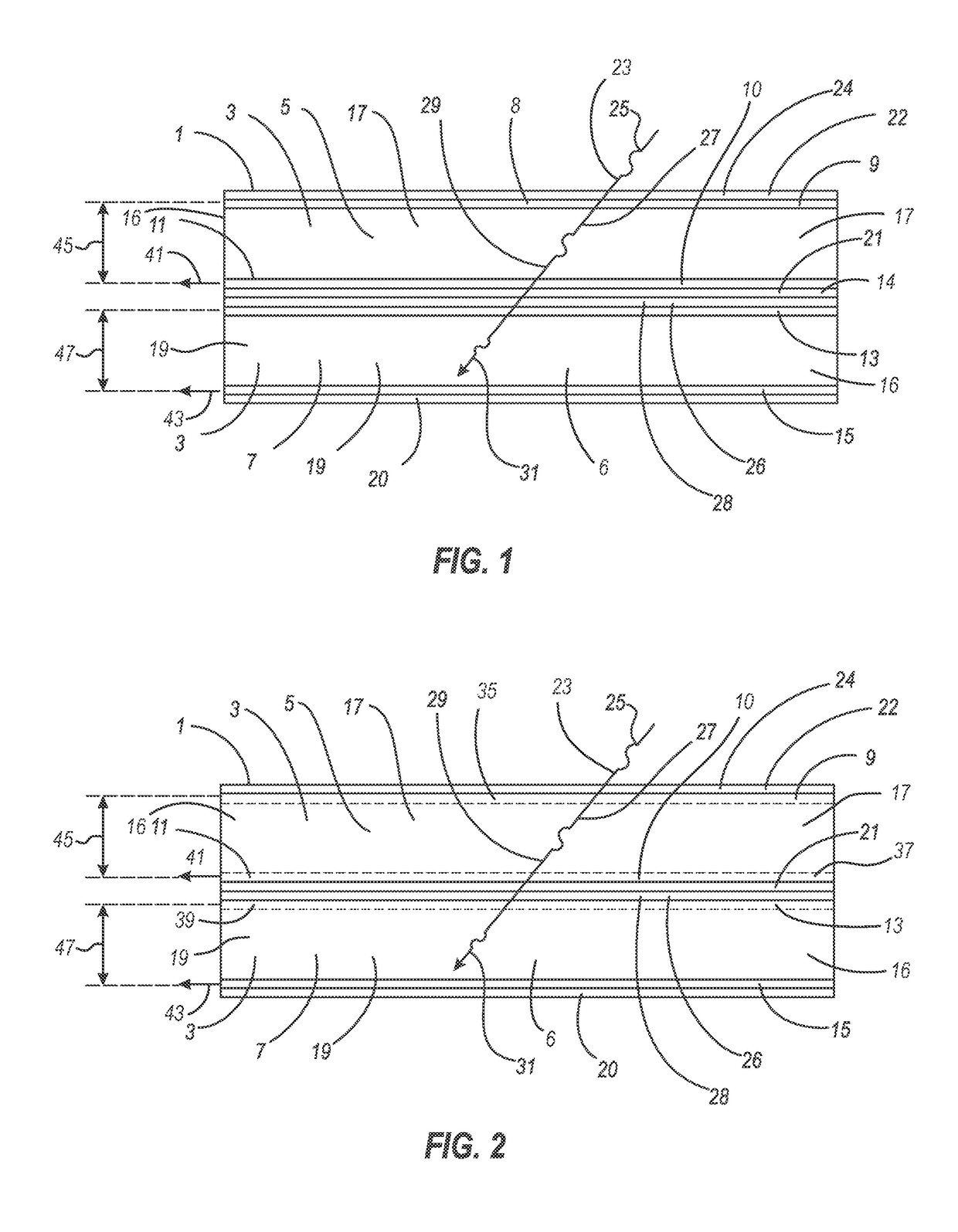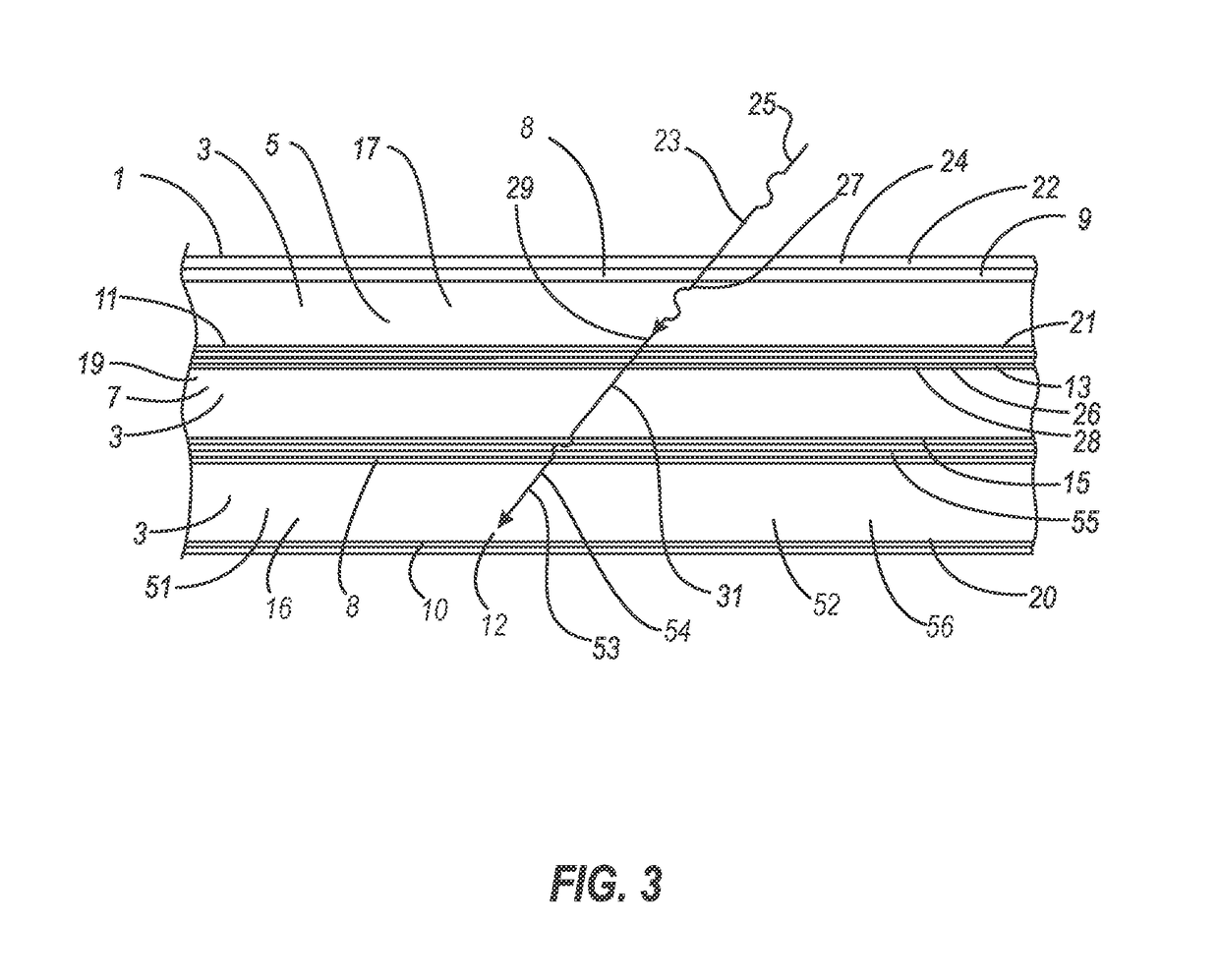Capacitor enhanced multi-element photovoltaic cell
a photovoltaic cell, multi-element technology, applied in the field of photovoltaic cells, can solve the problems of 7% power loss, blackbody radiation loss, band gap limitations, etc., and achieve the effect of optimizing the energy extraction of the photovoltaic array
- Summary
- Abstract
- Description
- Claims
- Application Information
AI Technical Summary
Benefits of technology
Problems solved by technology
Method used
Image
Examples
Embodiment Construction
[0047]Referring first to FIG. 1, a schematic cross-section of a preferred embodiment of the multi-element photovoltaic cell 1 of the present invention, having two photovoltaic elements 3, a first photovoltaic element 5 and second photovoltaic element 7, which, for a multi-element photovoltaic cell 1 having two photovoltaic elements 3, is also the last photovoltaic element 6. A first element front conductor 9 and a first element rear conductor 11 are in electrical contact with the first photovoltaic layer 17. Likewise, a second element front conductor 13 and a second element rear conductor 15 are in electrical contact with the second photovoltaic layer 19. The first element front conductor 9, the first photovoltaic layer 17, and the first element rear conductor 11 comprise a photovoltaic element 3, namely the first photovoltaic element 5. The second element front conductor 13, the second photovoltaic layer 19, and the second element rear conductor 15 also comprise a photovoltaic elem...
PUM
 Login to View More
Login to View More Abstract
Description
Claims
Application Information
 Login to View More
Login to View More - R&D
- Intellectual Property
- Life Sciences
- Materials
- Tech Scout
- Unparalleled Data Quality
- Higher Quality Content
- 60% Fewer Hallucinations
Browse by: Latest US Patents, China's latest patents, Technical Efficacy Thesaurus, Application Domain, Technology Topic, Popular Technical Reports.
© 2025 PatSnap. All rights reserved.Legal|Privacy policy|Modern Slavery Act Transparency Statement|Sitemap|About US| Contact US: help@patsnap.com



